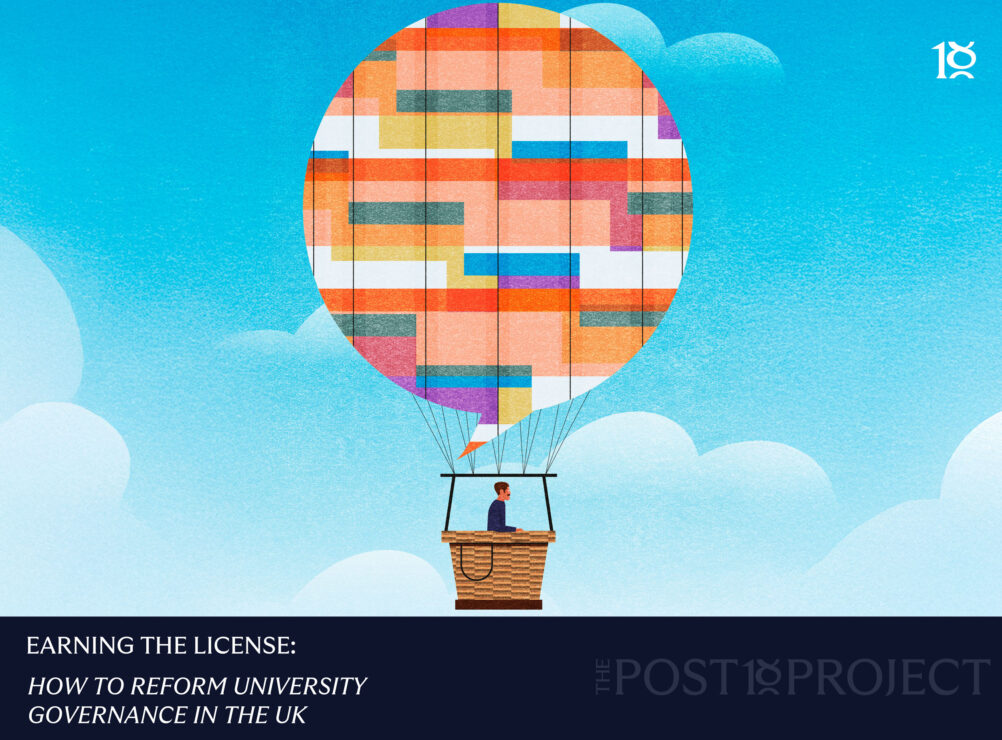As a panel member of the Teaching Excellence Framework exercise, I’ve spent a good part of the past year taking stock of the state of learning and teaching in England’s higher education providers.
One thing I’ve taken away from the exercise is that providers that have been successful in the TEF have a great story to tell about how they understand student experience, student outcomes, and educational gains and as a result, really have a grip on how well they know, work with, and engage their students.
I’ve lost count of the number of papers and presentations I’ve seen over the years about student engagement. It’s hardly the pedagogical equivalent of rocket science to point out that if a student is motivated, interested, and immersed in learning activities, they are much more likely to flourish, achieve, and progress. Yet to some extent – or in some parts of the sector – we have taken the view that engagement is primarily the student’s responsibility rather than building learning environments that are designed to hook students in and keep them consistently engaged over an extended period.
Self-engaging learners, certainly those at the start of their learning journeys, don’t need universities. The value that university education offers is the encouragement and support of university staff and the structures and systems that in turn support them – all of which enable students to engage deeply with knowledge and develop skills and ideally help to keep them mentally well. So, as much as the quality regime is grounded in metrics for student outcomes, I think that the TEF process indicates that the most productive response to that on the part of providers is to renew a focus on learning processes – the mechanisms by which students are enabled and encouraged to engage – and reflect these in learning design.
Digital first
In contemporary and future higher education, deploying technology isn’t optional, but there are more or less effective ways to do it to enhance learning and teaching. As a sector, we are terribly technologically challenged, with fragmented and dysfunctional legacy systems chosen for cost rather than for transformative learning and teaching. Many providers are now reaping the consequences of failure to anticipate the need for digital transformation during times of relative financial strength, and those times are now over.
Institutional culture and fragmented budgets unintentionally throw up numerous blockers to change – even a vice chancellor or pro vice chancellor can rarely make something happen on their own, let alone education or digital services leads. Since the pandemic, as the financial pressures on higher education have become more intense, we’re witnessing a creep away from “digital first” solutions – it has often been much easier to substitute hiring more people for effective digital systems. As in industry, where Britain’s productivity continues to lag, failure to invest in the systems that make things work will ultimately mean at organisational level and system level, that we are less able to compete with the corporations, platforms, and international competitors that are desperate to eat our lunch.
That means that, despite the challenges, now is the time for boldness. Digital technology such as the platforms developed by Kortext, now makes it much more possible to drive learning forward and build outstanding student learning experiences for much better engagement. For example, the sector needs to bring the aspiration of the flipped classroom to fruition and ensure that in-person learning encounters are social and active, allowing students to connect with each other and actually have fun learning. Technology also allows us to build a picture in increasingly fine-grained detail of what successful education processes look like – as students interact with their lecturers, campus services, each other, and learning resources online. The practice of tracking learning engagement to support retention, wellbeing, and success is nowhere near reaching its potential to deepen our understanding of what learning processes look like in real time. This needs to change.
I have written with Chris Husbands and Jason Tangen elsewhere on Wonkhe about how we consider the rise of generative AI to require a total overhaul of universities’ education strategies. We don’t know exactly how AI will reshape our collective concepts of learning, knowledge, and cognition over the coming decades but we can be sure that generative AI tools will soon saturate education at every level, reshaping students’ expectations at school and at entry to university and employers’ expectations of students’ capabilities on graduation. A developed understanding of how large language models work among academic teaching staff is essential to enable learning design that both incorporates the use of generative AI tools and promotes deep learning. Again, it’s about attention to learning processes – students need to be motivated to engage deeply and meaningfully, using AI as a tool to help them do so, rather than as a shortcut.
Success in the TEF
I think it highly likely that future iterations of the Teaching Excellence Framework will retain an element that asks providers to report on their approach to understanding and tracking educational gain. While educational gain can be defined in lots of ways – through degree and progression outcomes relative to entry profile; work readiness; graduate attributes; skills and competencies – student engagement is fundamental to understanding the processes by which students develop and how their learning is enhanced.
The best explanations of educational gain that we saw in TEF submissions demonstrated a real understanding of students – and a tangible and evidenced commitment to keeping them on track, and giving them agency. The use of technology was critical in generating the opportunities for consistent engagement and in tracking and evidencing impact. We also saw a number of examples of where providers had adopted digital technologies such as engagement analytics – but were much less able to explain how those analytics supported their core learning engagement agenda. Digital-first doesn’t mean technology-led, it means digitally enabled engagement in learning.
As the sector’s practice evolves, the TEF can be seen as offering a framework to enhance learning and teaching by asking providers to articulate the links between learner engagement, educational gain, and student outcomes. This, of course, requires the Office for Students to give the sector a degree of stability and predictability in what the TEF is likely to assess the next time round.
But ultimately success in the TEF should be seen as a side benefit of doing effective learning and teaching that demonstrably engages students. All of this means that the sector needs to move on from a fragmented approach to adopting digital technologies and prepare to invest in platforms and technologies that are consistently applied across the whole institution, getting the best out of learner engagement and truly creating opportunities for all.
This article is published in association with the Kortext smart study space and StREAM learner engagement analytics platform.













